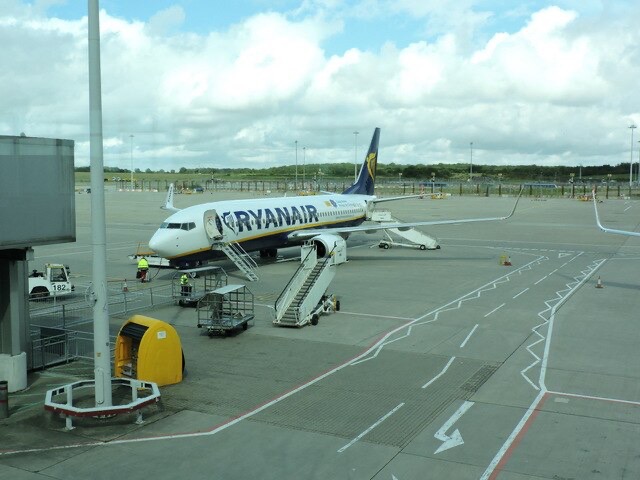It was supposed to be a smooth spring getaway. But for over 10,000 holidaymakers at London Stansted Airport, Sunday, May 11, 2025, turned into a nightmare of delays, confusion, and missed flights. A massive IT systems failure caused widespread disruption, bringing airport operations to a near standstill. Passengers found themselves caught in long queues, with little information and even fewer options as one of the UK’s busiest airports struggled to cope. This unexpected meltdown sparked chaos and frustration, igniting an online storm and raising serious questions about preparedness in the aviation sector.
Stansted Airport is no stranger to heavy travel traffic, especially during holiday periods. But this was different. An issue of this scale was both unprecedented and unthinkable, leaving thousands stranded and sparking massive flight cancellations and rescheduling headaches. The ripple effects stretched far beyond Essex, with knock-on delays at connected airports, disrupted travel plans, and growing anger among affected travelers.
What Happened at Stansted Airport?
Timeline of the IT System Failure
Early reports indicate that the IT issues began during the late hours of Saturday, May 10, and escalated quickly into Sunday morning. Systems controlling check-in services, baggage handling, and boarding operations started to fail, creating a bottleneck almost immediately. By 4:00 AM on Sunday, passengers arriving for early flights found themselves in limbo. Screens were blank, automated kiosks were down, and staff were quickly overwhelmed.
By 6:00 AM, the terminal was flooded with anxious travelers, many of whom were unaware of the situation until they arrived. Flights began to pile up, delays turned into cancellations, and the airport’s ability to process passengers came to a grinding halt. Airlines scrambled to adjust schedules, reroute flights, and communicate with stranded passengers.
Immediate Effects on Airport Operations
Every core function of the airport was impacted. The check-in counters were swamped, security lanes slowed to a crawl, and baggage systems were offline. Departures and arrivals displayed contradictory information, causing further confusion. At its worst, some passengers reported being in line for over four hours with no updates.
Staff tried to manage the situation manually, but with thousands of travelers and limited backup systems, the situation spiraled out of control. Some airlines suspended check-ins entirely, while others redirected passengers to alternative airports.
How Many People Were Affected?
Estimated Number of Missed Flights
According to initial estimates, more than 10,000 passengers missed their flights due to the disruption. With over 200 scheduled flights impacted, the actual number may be even higher once full data becomes available. Families on holiday, business travelers, and international tourists were all caught in the chaos.
For many, it wasn’t just a missed flight—it was missed weddings, holidays, meetings, and once-in-a-lifetime plans. The cost wasn’t only emotional. Rebooking fees, lost hotel reservations, and missed connections meant that many travelers took a financial hit as well.
Passengers’ Reactions and Social Media Buzz
Social media platforms lit up with posts from irate passengers. Hashtags like #StanstedChaos and #StanstedITMeltdown trended throughout the day. Some users posted images showing crowds packed shoulder-to-shoulder, while others shared stories of confusion, cancellations, and a lack of support.
“I’ve been standing in line for 5 hours with no information,” one traveler tweeted. “This is unacceptable.”
Another user posted a photo of a departure board with nearly every flight marked as “Delayed” or “Cancelled,” captioned, “The worst airport experience of my life.”
These real-time updates only added pressure on airport management to issue responses and find a solution quickly.
The Cause of the IT Meltdown
Airport’s Official Statement
Stansted Airport’s management issued a statement around 10:30 AM, acknowledging the disruption and attributing it to a “significant IT systems failure.” They reassured passengers that technicians were working to restore normal operations and apologized for the inconvenience.
“We understand the frustration this has caused and are doing everything possible to assist passengers and resolve the issue,” the statement read.
While that message offered some relief, it did little to alleviate the on-ground chaos, and many travelers remained confused about what to expect next.
Potential Technical Explanations
Though full technical details are yet to be disclosed, early speculation points to a server failure that may have affected key infrastructure systems. There is also talk of a potential cybersecurity breach, though this has not been confirmed.
IT systems in modern airports are highly interconnected. A single failure in the core network can cascade quickly, affecting check-in software, security systems, baggage controls, and airline communications. Without redundancy or rapid backup protocols, recovery is slow—especially when tens of thousands of passengers are involved.
This incident will likely spark broader debates on digital resilience in aviation and the need for robust disaster recovery systems.
Impact on Airline Services
Affected Airlines and Destinations
Virtually every airline operating out of Stansted was affected. Major budget carriers like Ryanair and easyJet faced the brunt of the meltdown due to their high flight volumes. Flights to popular European destinations—Spain, Italy, Greece, and France—were delayed or cancelled en masse.
International travelers, too, saw their itineraries shattered, with long-haul flights redirected or indefinitely delayed. With some airlines only offering rebookings days later, passengers had to consider alternative airports or even cancel plans entirely.
Rescheduling and Compensation Measures
Airlines moved quickly to issue rebooking options, vouchers, and hotel accommodations where possible. However, the sheer volume of passengers meant many requests went unanswered. Some travelers had to fend for themselves, booking new flights out-of-pocket or heading to other airports like Heathrow, Gatwick, or Luton.
Consumer rights advocates reminded travelers that under UK and EU law, they are entitled to compensation for cancelled or heavily delayed flights—especially when the disruption is within the airline’s control. However, given the cause was a broader airport system failure, the legal implications may vary.



